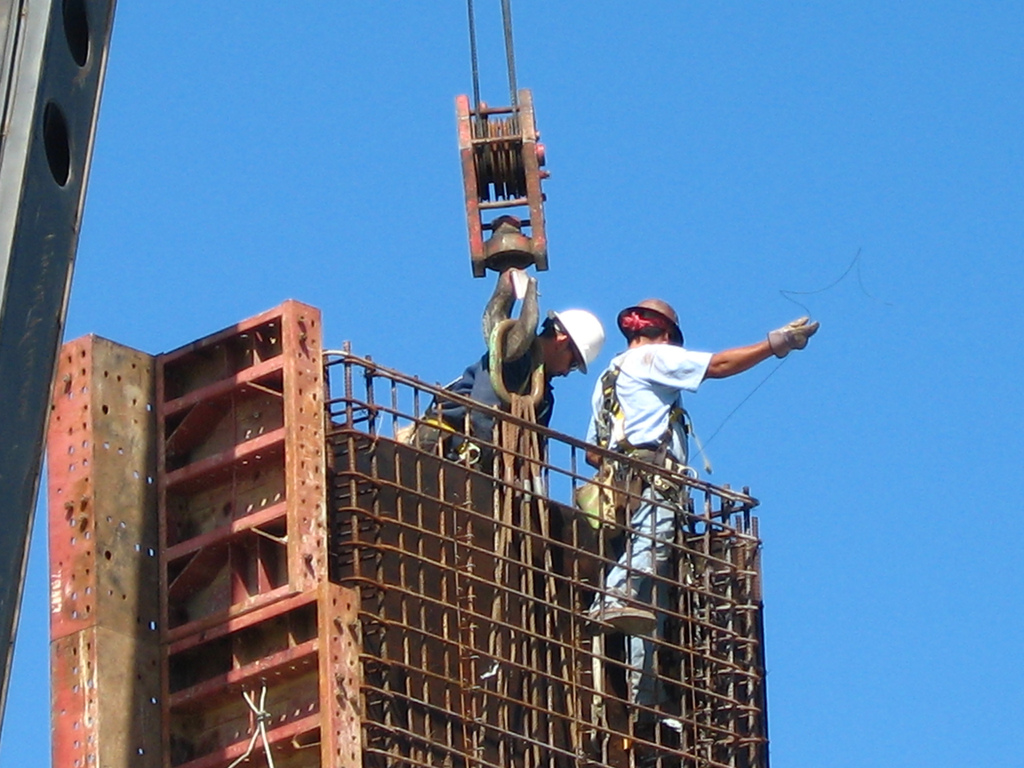Both real gross domestic product (GDP) and nonresidential fixed investment expanded during the third quarter, according to an analysis by Associated Builders and Contractors (ABC) of a release from the Bureau of Economic Analysis. GDP expanded 1.5% (seasonally adjusted annual rate) during the third quarter while nonresidential fixed investment expanded by 2.1% during that period, both building on positive results from the previous quarter.
The bureau estimated that GDP expanded 3.9% during the year's second quarter, while nonresidential fixed investment was revised upward to a 4.1% increase from an initial estimate of a 0.6% decrease. This marks the second consecutive release in which the previous quarter's nonresidential fixed investment figure was amended from negative to positive. Investment in nonresidential structures fell by 4% after growing by 6.2% in the second quarter.
"The U.S. economy is not quite as bad as the headline GDP number suggests," said ABC Chief Economist Anirban Basu in a statement. "Private final demand, an indicator that represents sales to nongovernmental domestic purchasers, expanded by 3.2% in the third quarter. Many economists consider this the most telling and persistent aspect of GDP, suggesting that the economy is healthier than some might suspect.
"The current quarter was heavily impacted by a foreseeable inventory adjustment, a stronger dollar and a weakening global economy," Basu said. "The fact that the recovery remains in place is reflected in fixed investment data, including the categories that relate most directly to nonresidential construction. While it is true that investment in structures slipped 4%, this largely appears to be a statistical give-back from the second quarter's better than 6% performance. Other data indicates ongoing momentum in nonresidential construction, which should be more apparent during ensuing GDP releases.
"The recovery will continue to be led by consumers," Basu said. "Interest rates will also feature prominently in terms of determining the extent to which the recovery will be sustained in 2016 and beyond. For now, ultra-low interest rates are inducing people to invest in order to generate financial yields. This has been a bonus for nonresidential construction, but potentially may be triggering over investment in certain construction segments."

Performance of key segments during the third quarter:
- Personal consumption expenditures added 2.19% to GDP after contributing 2.42% in the second quarter.
- Spending on goods grew 4.5% from the second quarter.
- Real final sales of domestically produced output increased 2.9% for the third quarter after a 3.7% increase in the second quarter.
- Federal government spending increased 0.2% in the third quarter after remaining unchanged in the second quarter.
- Nondefense spending increased 2.8% after decreasing by 0.5% in the previous quarter.
- National defense spending fell 1.4% after inching 0.3% higher in the second quarter.
- National defense spending fell 1.5% after growing 1% in the first quarter.
- State and local government spending expanded 2.6% during the third quarter after an increase of 4.3% in the second.
To view the previous GDP report, click here.
Related Stories
Legislation | Aug 5, 2022
D.C. City Council moves to require net-zero construction by 2026
The Washington, D.C. City Council unanimously passed legislation that would require all new buildings and substantial renovations in D.C. to be net-zero construction by 2026.
Cultural Facilities | Aug 5, 2022
A time and a place: Telling American stories through architecture
As the United States enters the year 2026, it will commence celebrating a cycle of Sestercentennials, or 250th anniversaries, of historic and cultural events across the land.
Sponsored | | Aug 4, 2022
Brighter vistas: Next-gen tools drive sustainability toward net zero line
New technologies, innovations, and tools are opening doors for building teams interested in better and more socially responsible design.
| Aug 4, 2022
Newer materials for green, resilient building complicate insurance underwriting
Insurers can’t look to years of testing on emerging technology to assess risk.
Sustainability | Aug 4, 2022
To reduce disease and fight climate change, design buildings that breathe
Healthy air quality in buildings improves cognitive function and combats the spread of disease, but its implications for carbon reduction are perhaps the most important benefit.
Multifamily Housing | Aug 4, 2022
Faculty housing: A powerful recruitment tool for universities
Recruitment is a growing issue for employers located in areas with a diminishing inventory of affordable housing.
Multifamily Housing | Aug 3, 2022
7 tips for designing fitness studios in multifamily housing developments
Cortland’s Karl Smith, aka “Dr Fitness,” offers advice on how to design and operate new and renovated gyms in apartment communities.
Building Materials | Aug 3, 2022
Shawmut CEO Les Hiscoe on coping with a shaky supply chain in construction
BD+C's John Caulfield interviews Les Hiscoe, CEO of Shawmut Design and Construction, about how his firm keeps projects on schedule and budget in the face of shortages, delays, and price volatility.
Codes and Standards | Aug 3, 2022
Some climate models underestimate risk of future floods
Commonly used climate models may be significantly underestimating the risk of floods this century, according to a new study by Yale researchers.
| Aug 3, 2022
Designing learning environments to support the future of equitable health care
While the shortage of rural health care practitioners was a concern before the COVID-19 pandemic, the public health crisis has highlighted the importance of health equity in the United States and the desperate need for practitioners help meet the needs of patients in vulnerable rural communities.

















